In the last article <Ti Sapphire Crystal for Medical Applications (1)> , we learned about the medical application of titanium gems, and this article continues with the introduction.
5. Ti Sapphire Crystal for Laser Surgery
5.1 Introduction
Ti Sapphire crystal has emerged as a promising material for laser surgery applications. In this chapter, we will discuss the principles of laser surgery and Ti Sapphire crystal’s role in these applications.
5.2 Laser Surgery
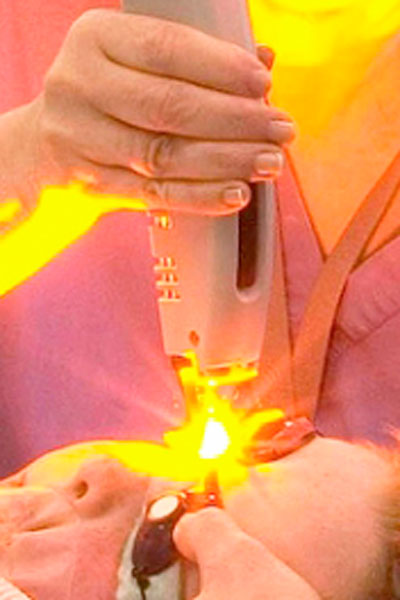
Laser surgery is a minimally invasive surgical technique that involves using a laser to cut or vaporize tissue. Ti Sapphire crystals are the light source in laser surgery because they generate high-intensity laser pulses in the femtosecond range.
Laser surgery is a minimally invasive surgical technique that involves using a laser to cut or vaporize tissue. Ti Sapphire crystals are the light source in laser surgery because they generate high-intensity laser pulses in the femtosecond range.
5.3 Advantages of Ti Sapphire Crystal in Laser Surgery
Using Ti:Sapphire crystals in laser surgery has several advantages over traditional surgical techniques. These advantages include reduced bleeding and inflammation, minimal damage to surrounding tissue, and faster healing times. Ti:Sapphire crystals also allow for precise tissue targeting, reducing the risk of complications.
5.4 Applications of Ti Sapphire Crystal in Laser Surgery
Ti Sapphire crystals have a wide range of applications in laser surgery, including dermatological surgery, ophthalmic surgery, neurosurgery, and cardiovascular surgery. Ti:Sapphire crystals remove skin lesions, birthmarks, and tattoos in dermatological surgery. Ti Sapphire crystals treat glaucoma, cataracts, and retinal disorders in ophthalmic surgery. In neurosurgery, Ti:Sapphire crystals remove tumours and treat epilepsy. In cardiovascular surgery, Ti:Sapphire crystals remove plaque from arteries and treat varicose veins.
5.5 Limitations of Ti Sapphire Crystal in Laser Surgery
There are also limitations to the use of Ti Sapphire crystals in laser surgery. These limitations include the potential for tissue damage due to the high intensity of the laser pulses, the need for expensive equipment and skilled operators, and the potential for complications, such as infection and scarring.
5.6 Conclusion
In conclusion, Ti:Sapphire crystals have emerged as promising materials for laser surgery applications. The unique properties of Ti Sapphire crystals, such as their ability to generate high-intensity laser pulses in the femtosecond range, make them ideal for laser surgery applications. Further research is needed to fully understand the potential of Ti:Sapphire crystals in laser surgery and to overcome the limitations associated with their use. Nevertheless, the outlook for using Ti:Sapphire crystals in laser surgery is highly promising.
6. Ti Sapphire Crystal for Cancer Treatment
6.1 Introduction
Ti:Sapphire crystal has shown great potential in the field of cancer treatment. In this chapter, we will discuss the principles of cancer treatment and Ti Sapphire crystal’s role in these applications.
6.2 Photodynamic Therapy for Cancer Treatment
Photodynamic therapy (PDT) is a promising non-invasive treatment for cancer that involves the use of photosensitizing agents and light to destroy cancer cells. The photosensitizer is administered to the patient and is taken up by the cancer cells. The Ti:Sapphire crystal is a light source to activate the photosensitizer and triggers the therapeutic response.
When the photosensitizer is exposed to light from the Ti Sapphire crystal, it absorbs the light energy. It undergoes a series of reactions that produce reactive oxygen species (ROS), such as singlet oxygen. These ROS then damage the cancer cells, leading to their destruction.
When the photosensitizer is exposed to light from the Ti Sapphire crystal, it absorbs the light energy. It undergoes a series of reactions that produce reactive oxygen species (ROS), such as singlet oxygen. These ROS then damage the cancer cells, leading to their destruction.
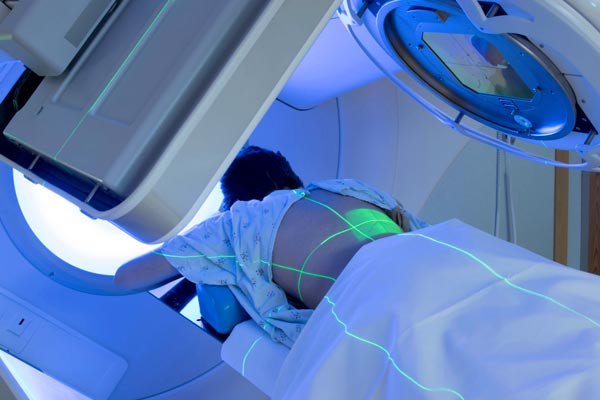
6.3 Laser Therapy for Cancer Treatment
Laser therapy is another promising treatment for cancer that involves the use of laser light to destroy cancer cells. Ti Sapphire crystals are the light source in laser therapy because they generate high-intensity laser pulses in the femtosecond range.
The laser light generated by the Ti:Sapphire crystal is absorbed by the cancer cells, causing various physiological responses, including increased apoptosis, decreased angiogenesis, and decreased tumour growth. Using Ti:Sapphire crystals allows for precise targeting of the cancer cells and increased effectiveness of the treatment.
6.4 Advantages and Limitations
Using Ti:Sapphire crystals in cancer treatment has several advantages, including their ability to generate high-intensity laser pulses in the femtosecond range, which allows for precise targeting of the cancer cells and increased effectiveness of the treatment. Ti Sapphire crystals are also highly efficient and have a broad bandwidth, which allows for a wide range of cancer treatment applications.
However, there are also limitations to the use of Ti:Sapphire crystals in cancer treatment. These limitations include the potential for tissue damage due to the high intensity of the laser pulses and the need for expensive equipment and skilled operators.
6.5 Conclusion
In conclusion, Ti:Sapphire crystals have emerged as promising materials for cancer treatment applications, including PDT and laser therapy. The unique properties of Ti:Sapphire crystals, such as their ability to generate high-intensity laser pulses in the femtosecond range, make them ideal for cancer treatment applications. Further research is needed to fully understand the potential of Ti:Sapphire crystals in cancer treatment and to overcome the limitations associated with their use. Nevertheless, the outlook for using Ti:Sapphire crystals in cancer treatment is highly promising.
7. Ti Sapphire Crystal for Spectroscopy
7.1 Introduction
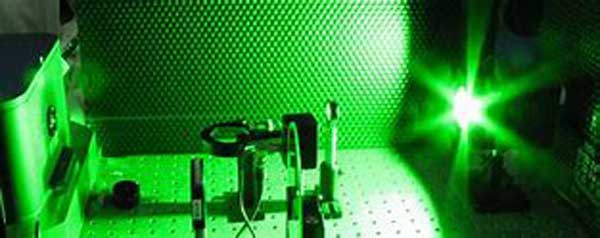
Ti:Sapphire crystal has become a popular material for spectroscopy due to its excellent optical properties, including a broad emission spectrum and a long fluorescence lifetime. In this chapter, we will discuss spectroscopy principles and Ti:Sapphire crystal’s role in these applications.
7.2 Spectroscopy
Spectroscopy is the study of the interaction between light and matter. It is a powerful tool for analyzing materials’ chemical and physical properties. In spectroscopy, light is directed at a sample, and the resulting absorption or emission spectrum is analyzed to obtain information about the sample.
Ti:Sapphire crystals are commonly used as the light source in spectroscopy due to their broad emission spectrum and long fluorescence lifetime. The broad emission spectrum allows for detecting a wide range of wavelengths, while the long fluorescence lifetime allows for detecting weak signals.
7.3 Applications of Ti Sapphire Crystal in Spectroscopy
Ti:Sapphire crystals have a wide range of applications in spectroscopy, including fluorescence spectroscopy, time-resolved spectroscopy, and nonlinear optics. Ti:Sapphire crystals excite the sample and detect the resulting emission spectrum in fluorescence spectroscopy. In time-resolved spectroscopy, Ti:Sapphire crystals are used to generate ultrafast laser pulses, which can be used to study the dynamics of chemical and biological systems. In nonlinear optics, Ti Sapphire crystals are used to generate harmonics and other nonlinear effects.
7.4 Advantages and Limitations
The use of Ti Sapphire crystals in spectroscopy has several advantages, including their broad emission spectrum and long fluorescence lifetime, which allows for the detection of weak signals. Ti:Sapphire crystals are also highly efficient and have a broad bandwidth, which allows for a wide range of spectroscopy applications.
However, there are also limitations to the use of Ti:Sapphire crystals in spectroscopy. These limitations include the potential for photodamage to the sample due to the high intensity of the laser pulses and the need for expensive equipment and skilled operators.
7.5 Conclusion
In conclusion, Ti:Sapphire crystals have become popular for spectroscopy applications due to their excellent optical properties, including a broad emission spectrum and a long fluorescence lifetime. Ti:Sapphire crystals have a wide range of applications in spectroscopy, including fluorescence spectroscopy, time-resolved spectroscopy, and nonlinear optics. Further research is needed to fully understand Ti:Sapphire crystals’ potential in spectroscopy and overcome the limitations associated with their use. Nevertheless, the outlook for using Ti Sapphire crystals in spectroscopy is highly promising.
8. Ti Sapphire Crystal for Femtosecond Laser Micromachining
8.1 Introduction
Femtosecond laser micromachining is a precise and versatile technique for creating microstructures in various materials. Ti:Sapphire crystal has become a popular material for femtosecond laser micromachining due to its ability to generate high-intensity laser pulses in the femtosecond range. In this chapter, we will discuss the principles of femtosecond laser micromachining and Ti Sapphire crystal’s role in these applications.
8.2 Femtosecond Laser Micromachining
Femtosecond laser micromachining is a non-contact technique that uses a high-intensity laser to remove material from a target substrate. The laser pulses generated by the Ti:Sapphire crystal are directed at the target substrate, where they interact with the material and cause it to vaporize, leaving behind a precise microstructure.
Femtosecond laser micromachining is a versatile technique that can create various microstructures, including channels, holes, and patterns. Ti Sapphire crystals allow for precise targeting of the material and the creation of high-resolution microstructures.
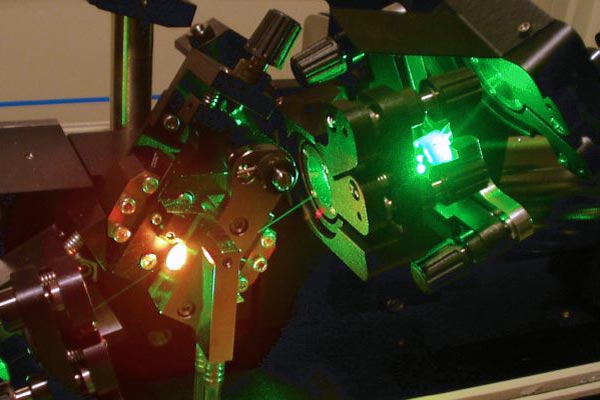
8.3 Applications of Ti Sapphire Crystal in Femtosecond Laser Micromachining
Ti Sapphire crystals have many applications in femtosecond laser micromachining, including fabricating microelectromechanical systems (MEMS), microfluidic devices, and optical components. In MEMS, Ti Sapphire crystals create precise microstructures in sensors and actuators. In microfluidic devices, Ti Sapphire crystals are used to create microchannels and microvalves to manipulate fluids. In optical components, Ti Sapphire crystals are used to create microstructures that control the transmission and reflection of light.
8.4 Advantages and Limitations
Using Ti Sapphire crystals in femtosecond laser micromachining has several advantages, including their ability to generate high-intensity laser pulses in the femtosecond range, which allows for precise targeting of the material and the creation of high-resolution microstructures. Ti Sapphire crystals are also highly efficient and have a broad bandwidth, which allows for a wide range of femtosecond laser micromachining applications.
However, there are also limitations to the use of Ti Sapphire crystals in femtosecond laser micromachining. These limitations include the potential for material damage due to the high intensity of the laser pulses and the need for expensive equipment and skilled operators.
8.5 Conclusion
In conclusion, Ti Sapphire crystals have become popular for femtosecond laser micromachining applications due to their ability to generate high-intensity laser pulses in the femtosecond range. Ti Sapphire crystals have a wide range of applications in femtosecond laser micromachining, including the fabrication of MEMS, microfluidic devices, and optical components. Further research is needed to fully understand the potential of Ti Sapphire crystals in femtosecond laser micromachining and to overcome the limitations associated with their use. Nevertheless, the outlook for using Ti Sapphire crystals in femtosecond laser micromachining is promising.
Conclusion:
In conclusion, Ti Sapphire crystals have become a highly versatile and valuable material in various fields, including medical applications, cancer treatment, spectroscopy, and femtosecond laser micromachining. Ti Sapphire crystals possess unique properties, including their ability to generate high-intensity laser pulses in the femtosecond range, broad emission spectrum, and long fluorescence lifetime.
Ti Sapphire crystals have been used for imaging and diagnosis, photodynamic therapy, and laser surgery in medical applications. Ti Sapphire crystals have enabled highly precise and effective treatments with reduced damage to surrounding tissues and faster healing times.

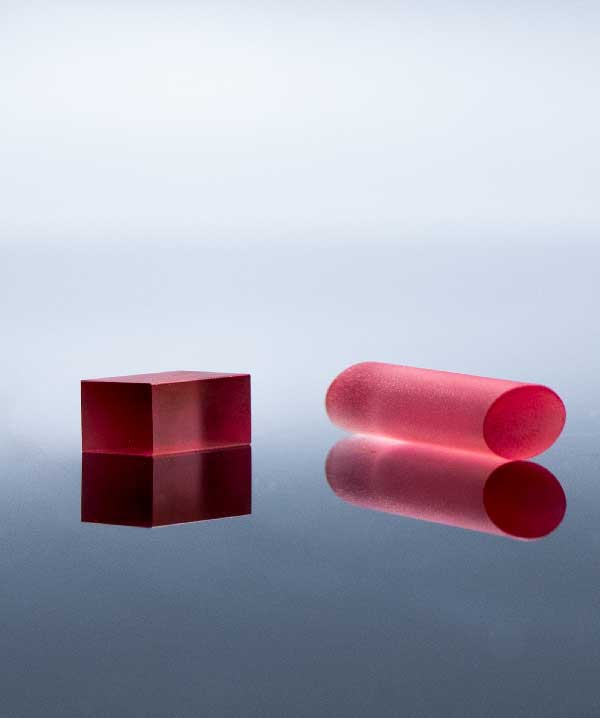

Ti Sapphire crystals have shown great potential in photodynamic and laser therapy in cancer treatment, allowing for targeted and efficient destruction of cancer cells while minimizing damage to healthy tissues.
In spectroscopy, Ti Sapphire crystals have become popular due to their broad emission spectrum and long fluorescence lifetime, enabling the detection of weak signals and a wide range of applications.
In femtosecond laser micromachining, Ti Sapphire crystals have become a highly valuable material, allowing for the precise and efficient creation of microstructures in various materials with applications in MEMS, microfluidic devices, and optical components.
Although Ti Sapphire crystals are limited in these applications, including the potential for material damage and the need for expensive equipment and skilled operators, the outlook for their continued use and development remains highly promising.
Overall, Ti Sapphire crystals have become a critical material in numerous fields and will continue to play a vital role in advancing future medical, scientific, and technological applications.

Frank
Frank graduated from the University of Shanghai for Science and Technology, majoring in optics. As a technical engineer at Crylink Company, he deeply understands crystal materials and laser components.
Related Video(s) with this Article
Related Product(s) with this Article
Related Application(s) with this Article

